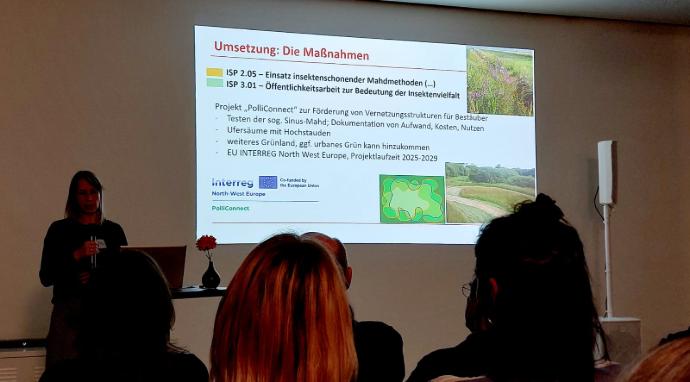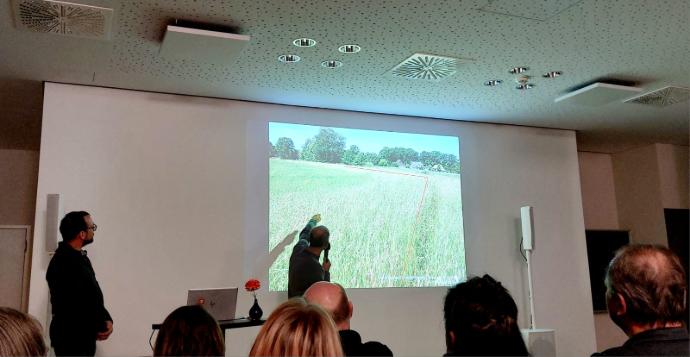PolliConnect is already helping to translate the new Bremen Biodiversity Strategy 2030 into very concrete action. At a recent event, our partner Alena Jost presented how PolliConnect fits into the city-state’s updated approach to biodiversity, while wild bee expert Rolf Witt introduced sinus mowing as a practical management method for more insect-friendly green spaces. Together, their contributions showed how a strategic framework and day-to-day land management can reinforce each other.
Let's work together


The Bremen Biodiversity Strategy 2030 was adopted in April 2025 to address the sharp decline in species and habitats. It sets 27 subgoals across seven action fields and combines legal obligations with voluntary measures, funding and communication. A strong focus lies on conserving and enhancing natural and landscape areas, including meadows, wetlands and urban green spaces, and on wild insect conservation through more biodiversity-friendly management in agriculture, water management and urban development. An action plan to 2027 and a new “Alliance” for biodiversity and insect conservation support implementation across sectors. Bremen-biodiversity-strategy-2030 @ Interreg Europe
Alena’s presentation positioned PolliConnect as one of the tools Bremen is using to deliver on these commitments. Bremen’s Senator for Environment, Climate and Science is a full partner in PolliConnect, which brings together public authorities, researchers and practitioners from across North-West Europe to restore pollinator habitats through ecological connectivity and innovative management techniques. For Bremen, this means using PolliConnect’s living labs, monitoring and exchange formats to test and scale measures that directly contribute to the biodiversity strategy’s subgoals on insects, green infrastructure and nature-based climate action.
Central to this link are the PolliConnect living labs, which are designed as open-air testbeds for creating pollinator corridors and trialling methods such as innovative mowing regimes (see aggregated data regarding PolliConnect). By aligning Bremen’s pilot sites with the action fields and indicators in the biodiversity strategy, the city can use PolliConnect not only to implement measures, but also to generate data that feeds into the strategy’s review milestones in 2027 and 2030.
On this basis, Rolf Witt’s contribution on wild bees as a species group as a species group that requires large areas of contiguous habitats became more than a theoretical presentation. Sinus mowing changes how public grasslands, roadside verges and other green areas are maintained. Instead of cutting everything to one short height at the same time, mowing follows curved “sinus-like” lines and is staggered over time. Parts of the area remain uncut or are cut later, creating a mosaic of different vegetation heights and flowering phases. This provides continuous nectar, shelter and breeding sites for insects, while still preserving areas of short grass where needed.
This approach speaks directly to the strategy’s call to conserve and enhance natural and landscape areas, especially urban green spaces, and to promote environmentally friendly practices in urban development and land management.